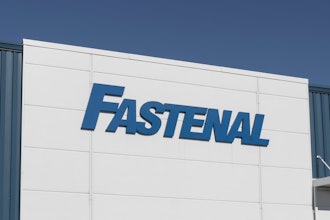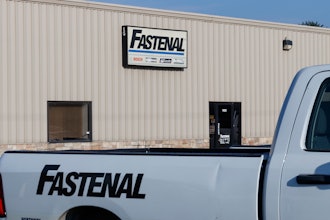Is there financial waste in your business as a result of poor pricing practices? By waste we mean revenue and profit leakage related to pricing. Most commercial leaders have a hunch that pricing leakage occurs, but how do you discover where and how much it is draining from your income statement?
If you have this concern, but have not attempted to quantify the problem, a practical first step is to do a “pricing diagnostic.” At my company, we’ve spent more than a decade working with industrial distribution companies in an innovative area called Pricing Optimization. Before we consider whether such a quantitative approach is warranted, we first evaluate a company’s current pricing practices using a series of diagnostic tests similar in purpose to those that doctors perform on patients and mechanics perform on cars. The goal is to understand where and to what extent systemic pricing problems exist, and estimate the associated costs. In this article, we’ll discuss a few of the most common areas of pricing waste and how their costs can ripple through into overall business performance.
Laggard Loss: Slow Quoting Hurts Win Rates
One of the most intuitive, yet pervasive costs of pricing problems stems from being slow to quote. Why does such an obvious problem exist so widely? Because most companies wait until a quote comes in or a negotiation is underway before they determine what price they are willing to accept. Reacting to deals, by definition, takes longer than having the answer predetermined. Take a typical branchbased distribution business such as automotive parts. Mechanics have their top three distributors on speed dial so that when they need a part, they can quickly call with two questions in mind: availability and price. Often, the counter rep is unable to immediately offer a discount that’s aligned with the customer’s price expectation, and thus has to go through an approval process for a lower price. The supplier with the fastest price response time, other factors being equal, wins. If, on average, suppliers take an hour or two to call back, imagine the sales upside for the company that could consistently quote a marketaligned price instantaneously.
To quantify the cumulative cost of this waste, let’s take a fictional $500 million parts distributor. Its first call-toclose ratio is 60 percent, the distributor pursues half of the other inquiries for price override approval, and of those only one in four closes. In effect, the close rate drops from 60 percent to 25 percent on override approval deals, and those that are won require more selling time and yield lower margins. With the winning answer immediately available at the counter, we’ve seen companies dramatically reduce the occurrence of overrides. In our experience, achieving a 10-point improvement to 70 percent first-call close is achievable. Based on typical broad-line margin rates, eliminating approval waste can stop tens of millions of annual price leakage and also have a material effect on market share.
Mistakes & Misalignment: Errors that Impact Customer Relationships
Mistakes happen, especially when you continually do something complex. While pricing mistakes can happen for a variety of reasons, one way to diagnose them is by looking at rebills. Let’s take a look at the size of waste associated with such pricing mistakes.
Companies tell us that rebills as a percent of sales are increasing. This is likely a result of three factors. First, many companies are pricing more dynamically, and for those that make those price changes manually, more errors occur. Second, their customers are deploying purchasing analytics applications that are adept at identifying any pricing inconsistency. And third, without procurement analytics, their customers are more diligent about tracking direct and indirect spend as their margins are increasingly compressed by market dynamics. Of course, customers quietly ignore those mistakes that are in their favor, but demand a refund for any form, real or perceived, of overpricing.
Rebills, like overrides, not only require extra work to process, but also result in lower prices and profits. They also have the potential to hurt overall market share. Left unchecked, persistent pricing errors will lead to customer churn.
There is another form of pricing error that results from a lack of price consistency and rationality, better put as irrational or misaligned pricing. Irrationality occurs when prices don’t make sense for a given circumstance, for example, when the price relationship between similar products is inverse to expectations. When prices don’t make sense to customers or sales people they often notice and react negatively. This occurs more often as channels proliferate and prices become more transparent. The problem might be corrected and the sale executed, but overall pricing confidence is damaged. As with other forms of price leakage, the impact on margins is negative. The risk of customer dissatisfaction and possibly defection is real.
In fact, we worked with a large MRO distributor that discovered this firsthand. The company had 20,000 customers, each yielding on average $3,000 of annual profit. The company’s rebill rate due to pricing errors was more than one percent. (The actual rate was surely higher given that customers rarely report instances where prices are too low.) This pricing rework not only wasted thousands of employee hours, but also impacted customer satisfaction. In fact, pricing problems were consistently one of the top three issues in customer satisfaction surveys. With an annual customer churn rate in excess of 20 percent, the high rate of pricing mistakes likely cost the company three to five points of market share.
Recovering Costs: Look Beyond Process Improvements
Slow quotes and pricing mistakes are just two of the many forms of pricing waste we’ve observed. A thorough diagnosis can help your company understand whether these or other problems are manifest and estimate their cost. Once the true and full costs of pricing process problems are understood, think deeply before jumping to a solution. We caution against increasing pricing process automation and control because in our experience better managed workflows don’t address the root cause.
Real pricing and profitability breakthrough occurs when commercial leaders challenge the need for cumbersome pricing processes to be happening at all. After all, the shortest amount of time you can spend on an activity is to not do it in the first place. Price optimization enables firms to streamline and decentralize the pricing decision process, improving alignment and control while eliminating leakage and waste. Pricing transformation could be a game changer for your company, but the first step is to do your homework to determine the real cost of your current approach to pricing.
Barrett Thompson is the general manager of pricing excellence solutions at Zilliant. Over the past 25 years, Barrett has built and delivered optimization and pricing solutions to Fortune 500 businesses in diverse vertical industries within the manufacturing and distribution space.
Eric Hills is Chief Marketing Officer at Zilliant, tapping into a deep passion for improving marketing effectiveness. He has twenty years of experience in the design and delivery of innovative front office technologies.
This article originally appeared in Industrial Distribution's March/April print edition. To view the full digital edition, click here.























